Interview with the construction and research team of "China Eye", China Eye: from catching up to leading
Since China's Tianyan entered the explosive period of achievements, people unconsciously added the word "you" before the new discovery of China's Tianyan. On August 18th, Chinese astronomers discovered a new form of pulsar radiation using the Chinese Eye, and the research results on dwarf pulsar radiation were published online in the journal Nature Astronomy. This week, Face to Face interviewed the construction and research team of "China Tianyan".
On June 29th, the research team of the Chinese pulsar timing array published an article in the journal Astronomy and Astrophysical Research, which detected key evidence for the existence of nanohertz gravitational waves. It is considered a breakthrough in human exploration of nanohertz gravitational waves.
Li Kejia, one of the initiators of the Chinese pulsar timing array research team, abbreviated as CPTA.

On June 29th, a pulsar timing array research team from the United States, Australia, and India also published a paper with the same content worldwide.
Li Kejia: First of all, what is the use of nanohertz gravitational waves? I don't know, nor do I know how to tell the general public that nanohertz gravitational waves are very interesting. But what does astronomical research tell us? If we treat the universe as a bottle of mineral water, and put it in a 500ml bottle of mineral water, the glowing universe we can see is only a drop of water inside, and 99.5% of things are invisible to electromagnetic waves. Then you need to open other observation windows to directly explore what the entire universe looks like. Gravitational waves are a very important part inside.
Einstein predicted the existence of nanohertz gravitational waves in general relativity. After that, several generations of astronomers devoted themselves to detecting its existence until humans discovered pulsars and realized that using pulsar timing arrays could capture the traces of nanohertz gravitational waves, which gave hope for finding it. In the past 20 years, there have been four major pulsar timing array research teams worldwide, namely PPTA from Australia, EPTA from Europe, NANOGrave from the United States, and CPTA from China, with the China team being the latest to be established.

Li Kejia: This incident is actually quite accidental. Our project started observing around 2019, so by last year, we needed to organize this data. At this time, NANOGrave in the United States was analyzing their data for fifteen years, EPTA in Europe was analyzing their data for eighteen years, and PPTA in Australia had even longer data. We met with the International Pulsar Timing Array Alliance in March this year, and we realized that several other international teams would also publish their results near that time point. So, we decided to schedule the same time for this article to be published for everyone to see.
Li Kejia: It took three years and five months from the first bit of pulsar test data at FAST to the data storage time node.
Li Kejia: You can say that leading is possible, but this lead is actually a very, very weak lead in a sense. I think your question is, how can we catch up with the main force after working for such a short time?

Li Kejia: Because we have a large telescope, this is decisive.
The Chinese Tianyan FAST, which plays a decisive role, is the world's largest and most sensitive single aperture radio telescope. It is hidden in the mountains of Qiannan, Guizhou, and is a typical national major scientific and technological infrastructure after the rise of the big science era. Its full name is the 500 meter Aperture Spherical Radio Telescope, which stands for "fast" in English.
Jiang Peng, Executive Deputy Director and Chief Engineer of FAST Operations and Development Center.

Due to the need to shield electronic signals during the operation of radio telescopes, five kilometers around FAST have been designated as the core area of the electromagnetic wave quiet zone. So, even if the filming team of the "Face to Face" program goes to FAST's workspace, they can only use cameras in the control room.
Jiang Peng: This is determined by sensitivity. In the field of astronomy, it may seem like a romantic discipline, but in terms of instrument competition, it is extremely cruel and brutal. The first thing you see is discovery, and the second thing you see may be validation.
In front of the FAST complex building built on the mountain, a statue of Nan Rendong, the father of the Chinese Heavenly Eye, stands quietly. Before the young Chinese team spent three years and five months catching up, Nan Rendong and the FAST team went through a 22 year long run, which began with a simple wish.
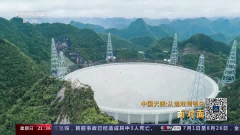
Nan Rendong: Everyone else has their own big equipment, but we don't. I really want to give it a try.
The desire to build a radio telescope originated from the International Radio Science Union conference held in Japan in 1993, during which astronomers from multiple countries jointly proposed the idea of building a new generation of super radio telescopes. This idea gave the attending Nan Rendong an opportunity. At that time, he served as the deputy director of the predecessor of the National Astronomical Observatory, the Beijing Observatory.
Nan Rendong: The current state of international development, where is the forefront of astronomical science? It's right there. If you don't rush forward, no one is waiting for you.
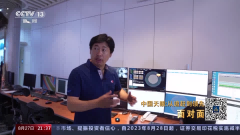
In the mid-20th century, the emergence of radio telescopes broke the pattern where humans could only rely on optical telescopes for astronomical observations of visible light. It observes celestial bodies by capturing radio waves, and the larger the aperture and quantity, the higher the sensitivity and resolution. Of course, the investment in engineering also increases accordingly. The construction of large radio astronomical telescopes has become a competition of national strength.
In 1963, the United States built the Arecibo radio telescope with a diameter of 305 meters, which is known as the top ten engineering projects of the 20th century.
In 1972, Germany built the Eiffelsberg 100 meter radio telescope, known as the largest machine on the ground and the world's largest rotating radio telescope to date.
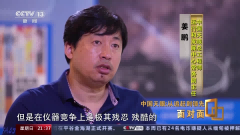
In 1993, India built a giant meter wave radio telescope near the equator, consisting of 30 45 meter diameter rotating parabolic antennas.
In 1993, the maximum aperture of China's radio telescope was only 25 meters. This gap limits the research of Chinese astronomers.
Chang Jin: Astronomy is an observational discipline, and without equipment, it is impossible to make progress. The gap between our country and the international community is too large.

Chang Jin, the current vice president of the Chinese Academy of Sciences, director of the National Astronomical Observatory, and chief scientist of the "Wukong" dark matter particle detection satellite. In 1993, it was his second year working at the Purple Mountain Observatory.
Chang Jin: There are a few desks, paper, and pens, and nothing at all. Basically, those devices are still from before or during the liberation.
Chang Jin: Mainly using observation data from abroad or going abroad, using foreign telescopes.

Chang Jin: No, I need to apply. Some of the data is publicly available. I specialize in space astronomy, and foreign satellite data is mostly second-hand to us. They have already published it, analyzed it, and then found some valuable things from those data.
Compared to other disciplines, astronomy is a relatively active field of international exchange and cooperation. Chinese astronomers can apply for observation time from foreign observatories for research, but that is not easy. Some people have also gone abroad, and since the 1980s, Nan Rendong, who is older than Chang Jin, has been conducting guest studies at several astronomical institutions in the Netherlands, Japan, the United States, and Italy.
He believes that international cooperation in building large radio telescopes is an opportunity for China because he knows that large astronomical telescopes not only require huge investment, but also sufficient technological reserves. International cooperation can make up for China's shortcomings in these two aspects. At the end of 1993, Nan Rendong reached a consensus with a group of domestic astronomers to strive to build a large radio telescope in China.
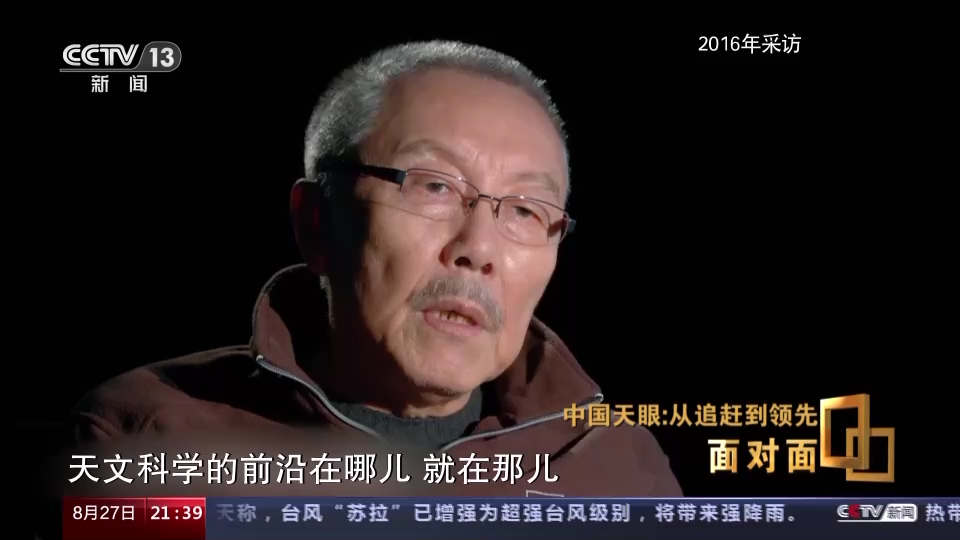
Nan Rendong: You must be prepared, face numerous difficulties, be mentally prepared, and be prepared for action.
The first step of action is site selection, which needs to be matched with the technical solution. Three options: large quantity and small caliber; Medium quantity, medium caliber, and a few or larger calibers indicate different site selection directions.
Nan Rendong: There are three options, and we only have a small number of options that are suitable for China's national conditions.
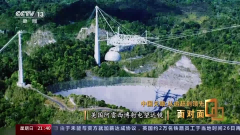
100 meters is the limit of a fully movable single aperture radio telescope, which is determined by the load-bearing capacity of the bracket. The Arecibo telescope in the United States is an exception, as its aperture can reach 305 meters because its site utilizes depressions formed by karst landforms. The advantage of doing so is not only that the caliber can be enlarged, but also that it can save huge funds required for earthwork engineering. And China has the world's largest karst landform, with a high probability of finding large and round depressions.
The site selection process that began in 1994 lasted for four years, and records show that the number of alternative station sites has changed from 3000 to 300 to 80 to 3. In the end, Dawodang in Pingtang County, Qiannan Prefecture, Guizhou Province stood out. However, the pursuit of international cooperation is becoming increasingly elusive.
Chang Jin: Initially, Nan Rendong proposed this plan with original ideas. Americans and Europeans were very interested in this plan, but if the telescope was to be placed in China and Western countries were not very willing, he decided to do it himself.

In March 1998, after a 4-year journey, the concept of the FAST project with Dawo Taipa as the site was clearly proposed, and 53 year old Nan Rendong personally designed its logo. After the engineering concept was proposed, the FAST project entered the pre research stage.
In this collection of reminiscences of Nan Rendong, Zhu Boqin, who was the first to participate in the FAST project, wrote: "The beginning of everything is difficult, and since 1994, the difficulties we have faced have been very real. For example, the first major difficulty is: lack of money.". Over a period of 13 years, FAST's research funding was only a few hundred thousand yuan. Due to a lack of money, Nan Rendong was jokingly referred to as the "leader of the Beggar's Sect" by the team members.
Chang Jin: We can see Mr. Nan Rendong's persistence. China is still a developing country and very poor, and limited funds are needed to use the technology that China already has to accomplish to achieve China's Tianyan. Therefore, he is very persistent. Of course, he has suffered a lot from this, mainly to solve some technical problems.

As a major national scientific and technological infrastructure, FAST's preliminary research includes multiple systems such as site excavation, reflector, feed support, measurement and control, receiver and terminal, totaling 35 sub projects, involving various disciplines such as astronomy, measurement, control, electronics, machinery, and structure. There is no relevant experience to draw on domestically or internationally. In the pre research stage, dozens of research institutes and hundreds of expert teams of the Chinese Academy of Sciences participated, demonstrating the advantages of China's new nationwide system and the powerful force of institutionalized scientific research.
In 2007, the overall plan and feasibility report of FAST project became the 11th Five Year Construction Project recommended by the Chinese Academy of Sciences to the National Development and Reform Commission after fierce competition within the Chinese Academy of Sciences. At this time, it has been 13 years since the launch of FAST, and Nan Rendong's life is still 10 years away.
Chang Jin: Many people have various ideas, but to turn an idea into a successful thing, you need to solve these intermediate paths, find various opportunities, and find funding. All scientists have experienced this, every step is like this, and every day is like this.
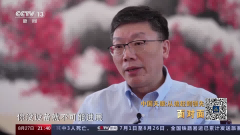
Chang Jin: I don't think it's a waste, and I believe it's not a waste for Mr. Nan Rendong either. All your ideas must withstand the test, your mind must go round and round, and the situation in the country is like this. You cannot expect to give you as much as you want.
Chang Jin: I believe most people, including Mr. Nan Rendong, have the same idea as me. We were born in the 1960s, experienced reform and opening up, and lived the way we are today. Everyone knows that if you go to the west to see what kind of life the people are living, then you will know.
Chang Jin: You still need to have a bit of patriotism. For the national team, you must think about the country's affairs. You must strive to jump up and not be easily accessible. Give me 10 billion yuan and I will get a telescope.
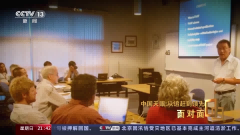
Chang Jin: I believe that the beginning of Tianyan should be inevitable because the country's economic strength has also reached a certain level. These more than ten years are not wasted. It has gone from being someone who no one else can believe you can succeed to being someone who gradually believes you may succeed, and then the probability reaches a certain level before the country approves it.
On October 31, 2008, the National Development and Reform Commission approved the feasibility study report for the FAST of the 500 meter aperture spherical radio telescope; Two months later, the groundbreaking ceremony held at the Guizhou Tai Site Dawodang marked the beginning of FAST's construction phase.
At this turning point, the FAST team needs the participation of young talents.
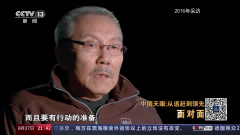
Jiang Peng: In 2009, when I happened to graduate with a PhD, I saw a recruitment resume. The picture behind me was a 500 meter diameter cable net that could also deform. Its parabolic surface could be formed in different parts of it, and the control accuracy was required to reach the millimeter level. This was unbelievable in my understanding at that time. I even thought that this project might be a deceiving project, but the recruitment notice had a special intention to attach an approval letter from the National Development and Reform Commission at the end, telling me that it was a real large-scale scientific project. Okay, I think I'll go see how this project is actually implemented.
In 2009, Jiang Peng, who studied engineering for his undergraduate and master's degrees, and pursued a PhD in solid mechanics, saw the recruitment notice for the FAST project. What surprised him was FAST's most innovative active reflector system.
The so-called active reflector is the spherical surface of FAST, which can change its shape according to the position of the observation target, instantly forming a parabolic surface with a diameter of 300 meters, used to receive and track the radio waves emitted by the observation target. This is the biggest difference between FAST and the similarly shaped Arecibo telescope, as FAST's eyeballs rotate while Arecibo's do not. But how to change the shape of an active reflective surface with a large area depends on the cable mesh. It needs to support the reflective surface and also make the reflective surface move. This design made Jiang Peng feel incredible.

Jiang Peng: It's because it seems impossible that I want to know how it was achieved. It almost satisfies all my expectations for a legendary project, if it is true.
Jiang Peng: It's just that it's too difficult, seemingly impossible. The creativity of this thing includes engineering difficulty, and so on. I think this is a difficult project to encounter, and so far it has proven that my feelings are right.
After more than ten minutes of interview, almost the next day, Jiang Peng received the notice of being hired. In the FAST team, his first task was to use mechanical simulation software to create a mechanical model of the cable network, in order to verify whether the cable network concept could be established. Jiang Peng completed this task in four months. Through mechanical models for evaluation and calculation, the steel cables used in the cable network need to reach a fatigue strength of 500 megapascals and 2 million cycles. However, looking at the world, steel cables with stress amplitudes exceeding 300 megapascals have not yet emerged. Nan Rendong, who once worked as a technician in a factory and became the head of a technical department, realized the seriousness of this problem.

Jiang Peng: We conducted the most systematic and large-scale fatigue test in history. If you haven't heard of this report, it's hard for you to imagine that such a work was led and developed by a unit called the observatory. Isn't the observatory designed to observe stars? How could you still do this?
After the passage of time, Jiang Peng could talk about the fatigue test with such a relaxed tone, but at that time, the fatigue problem caused controversy for FAST, and some even felt that FAST could not continue. The fatigue test is the only way for the FAST team, provided that they cannot retreat or change the original design intention.
Jiang Peng: That was a very tense period for Nan Rendong because it was the most disruptive risk for China's Tianyan.
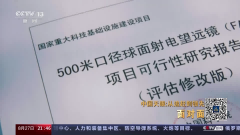
Jiang Peng: I am the most grassroots engineer, and I am only responsible for doing my job well. The real project leader must be Teacher Nan. He is holding on when the sky falls, and he is very uncomfortable. Every time I went to his office, I felt like his hair was standing upright for a while. I sat there watching him walk back and forth, rarely sitting down. I had never seen such a state before or after.
The experiment lasted for a full two years, and through improvements in coating technology and optimization of flexibility, the new steel cables gradually approached the requirements of FAST engineering.
Nan Rendong: The stress amplitude of the steel cables we are currently using can reach 550, and the fatigue cycle can reach 2 million. Originally, there was no such strength. FAST has promoted Chinese enterprises to create a new steel cable standard, which is not a patent. Do you understand? It's a standard.

According to Hong Kong's Wen Wei Po, a bloody knife stabbing case occurred at Hollywood Square in Diamond Hill last Friday. The police arrested a 39 year old man on suspicion of stabbing two young women, one of whom was stabbed over 30 times. The suspect appeared in the Kwun Tong Magistrates Court this morning. The police at the Kwun Tong Magistrate's Court temporarily charged the suspect with two counts of murder last Sunday. The suspect appeared in court this morning at the Kwun Tong Magistrate's Court. Acting Chief Magistrate Zheng Jihang, after listening to the opinions of both the prosecution and defense, decided to postpone the hearing for two weeks until 9:30 am on June 19th, waiting for two psychiatric expert reports to be obtained. The defense did not object. Zheng Jihang approved the application, and the defendant needs to be temporarily detained at Xiaolan Mental Hospital. When the suspect appeared in court, he wore black framed glasses, a light gray shirt, and camouflage green shorts, and was able to answer the judge's questions normally. accordingly

Currently, the highly anticipated summer harvest work in Henan has shifted its focus to the northern region of Henan. According to the Henan Daily client, on June 4th, Lou Yangsheng, Secretary of the Henan Provincial Party Committee, presided over a special video scheduling meeting on the "Three Summers" work in the province, listened to the situation report, analyzed and judged the situation, and arranged and deployed the next steps of work. Governor Wang Kai made specific arrangements. On the evening of May 31, 2023, in Xiafutou Village, Xuliang Town, Boai County, Jiaozuo, Henan Province, villagers braved light rain in the wheat fields to harvest wheat. Visual China Map Lou Yangsheng pointed out that the current summer harvest battle in the province has entered the decisive stage. Doing a good job in summer harvest in northern Henan Province is related to the summer grain yield and seed safety. We should focus on seizing opportunities and make every effort to organize the wheat harvesting work in the northern Henan region, minimize losses, and protect the interests of farmers to the greatest extent possible. Accurate forecasting is essential

On June 4th, the return capsule of the Shenzhou-15 manned spacecraft successfully landed at the Dongfeng landing site. Astronauts Fei Junlong, Deng Qingming, and Zhang Lu all safely and smoothly exited the spacecraft, and the Shenzhou-15 manned flight mission was a complete success. What innovative technologies are there to safeguard the return journey of Shenzhou 15 in this mission? On June 4th, the return capsule of the Shenzhou-15 manned spacecraft successfully landed at the Dongfeng landing site. Xinhua News Agency reporter Lian Zhen photographed that "the sky and the ground" ensure the high-precision return of spacecraft. For the Shenzhou series spacecraft, the return and re-entry GNC technology is directly related to the life safety of astronauts. Taking the success of this return mission as a symbol, China has comprehensively upgraded its GNC system since the Shenzhou-12 manned spacecraft, which features autonomous rapid rendezvous and docking, autonomous adaptive prediction and re-entry return guidance, and has completed a comprehensive update and replacement

At noon today, a Chinese naval fleet consisting of Zhanjiang and Xuchang ships arrived at the assembly area of the "Comodo-2023" multinational maritime joint exercise. It is understood that the assembly anchorage for this exercise is 3 nautical miles long and 1.5 nautical miles wide, capable of anchoring up to 50 ships. Naval vessels from various countries participating in the exercise will also arrive at the anchorage today to complete the assembly of the "Komodo 2023" multinational maritime joint exercise, which is held every two years by the Indonesian Navy. This year is already the fourth edition of the exercise. The exercise will be held from June 5th to 8th in the city of Jakarta, South Sulawesi Province, Indonesia, including the port and sea phases. In the coming days, participating navies from various countries will participate in ship reading style search and rescue exercises, maritime interception and damage management exercises, aerial exercises, and other course objectives exercises

On the evening of June 1st, the US Senate passed a bill on the federal government's debt ceiling and budget, and the flame of the US debt bomb was temporarily extinguished at the last moment. The two parties in the United States have staged an extreme tug of war over the US debt bomb. Some experts believe that the US debt crisis is the result of the reckless politics promoted by the US dollar hegemony, and the underlying cause of this crisis is the highly polarized political system of the US. Since the end of World War II, the US Congress has adjusted the debt ceiling more than a hundred times. The recurring debt crisis will not only have a catastrophic impact on the US economy and people's livelihoods, but also continuously erode the value of US dollar assets such as government credit and US bonds, bringing significant and far-reaching impacts to the global economic landscape. 【